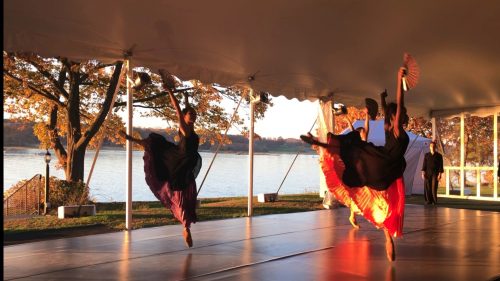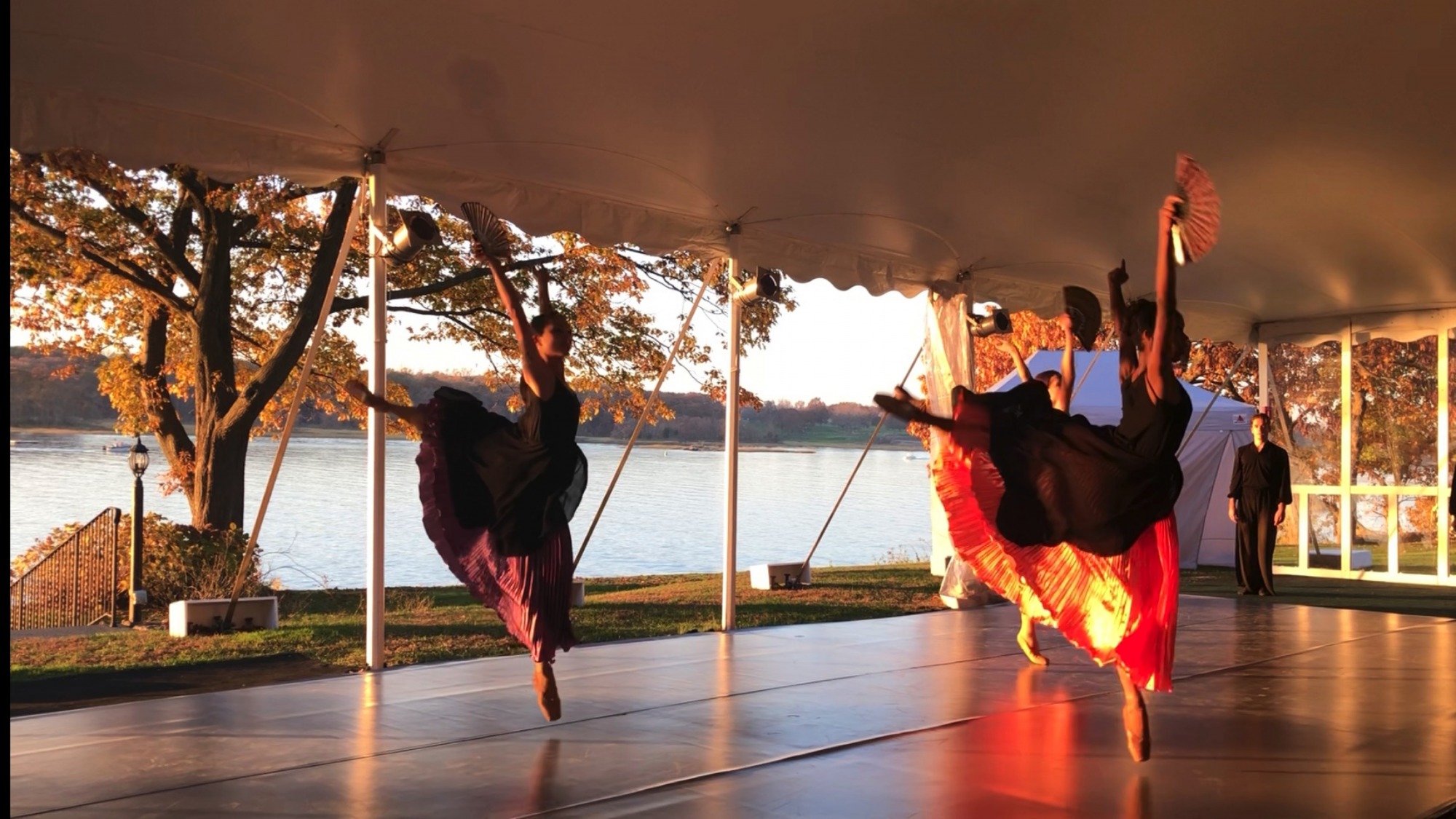The Dancing Caravan

During the reign of King Louis XIV, a time in which France’s population was decimated by the plague, the King turned to the arts for relief. At that time, what is known to be the first dance troupe was formed – established by an actor, a dancer and a composer. According to Carole Alexis, Director and Choreographer at Ballet des Amériques (BDA), the troupe performed for the King regularly, but also performed on stages for all the public to witness.
It is with the same heart that Alexis chose to revisit this concept of the traveling dance theater – and the modern-day Dancing Caravan was conceived. Though the idea was imagined prior to the COVID-19 pandemic, it was finally visualized, and took on its most meaningful relevance last summer during the circumstances of the virus’s outbreak.
The company sought to bring dance to outdoor venues during a time when people were unable to attend theaters, concerts and performances. To do this, BDA offers the full shebang – a portable sprung dance floor, changing room tents, sound system and lights.
“The idea is to have the equipment and general wherewithal, as well as a suitable repertoire, to bring dance performances to places where one would not expect to find them,” says Alexis.
In other words, BDA brings the art to the people.
In a recent interview with the Consulate General of France in New York, Alexis stated that during the pandemic, and the social issues that arose during it, she wanted “to move on, to create art, to not give up, and not accept that arts disappear in moments of crisis.”
This spring, the Caravan continues to appear in Westchester and beyond. On May 22, BDA will present two performances in front of the Wainwright House in Rye. On June 19, the “Caravan” takes to Gantry Park in Long Island City. Alexis says that they anticipate more summer and fall performances to become solidified.
The program for these performances is chosen carefully: “We select pieces that are ideal and appealing in outdoor settings…[we wouldn’t] present full-length ballets or dances that require elaborate stage settings…but rather, we take into account, for example, the fact that daylight may prevent elaborate lighting designs.”
The two-act program, to be performed by at least six dancers, begins with Peter and the Wolf, a 38-minute ballet suitable for young audiences and families, with the music of Sergei Prokofiev. It was originally choreographed, and later adapted for the Caravan, by Alexis. The second act is an entrée de ballet, that is, pieces that are no longer than five to ten minutes. The selections draw from Caribbean, Celtic and French cultures, among others.
The Dancing Caravan creates a direct connection between the people and the arts. Says Alexis: “It is effective in that it brings dance theater to the people in places where they already are, and thus is effective in growing audiences for dance.”
Correction: The date initially listed by BDA and included in this article was May 23. It has since been updated to the correct performance date of May 22.
A version of this article first appeared in the May issue of ArtsNews, ArtsWestchester’s monthly publication. ArtsNews is distributed throughout Westchester County. A digital copy is also available at artsw.org/artsnews.
About Mary Alice Franklin
Mary Alice Franklin is ArtsWestchester’s Communications Manager and Editor of ArtsNews. She has a Bachelors in English and Masters in Publishing, and has been published in Paste Magazine, HuffPost, Art Zealous, Art Times, and more.

